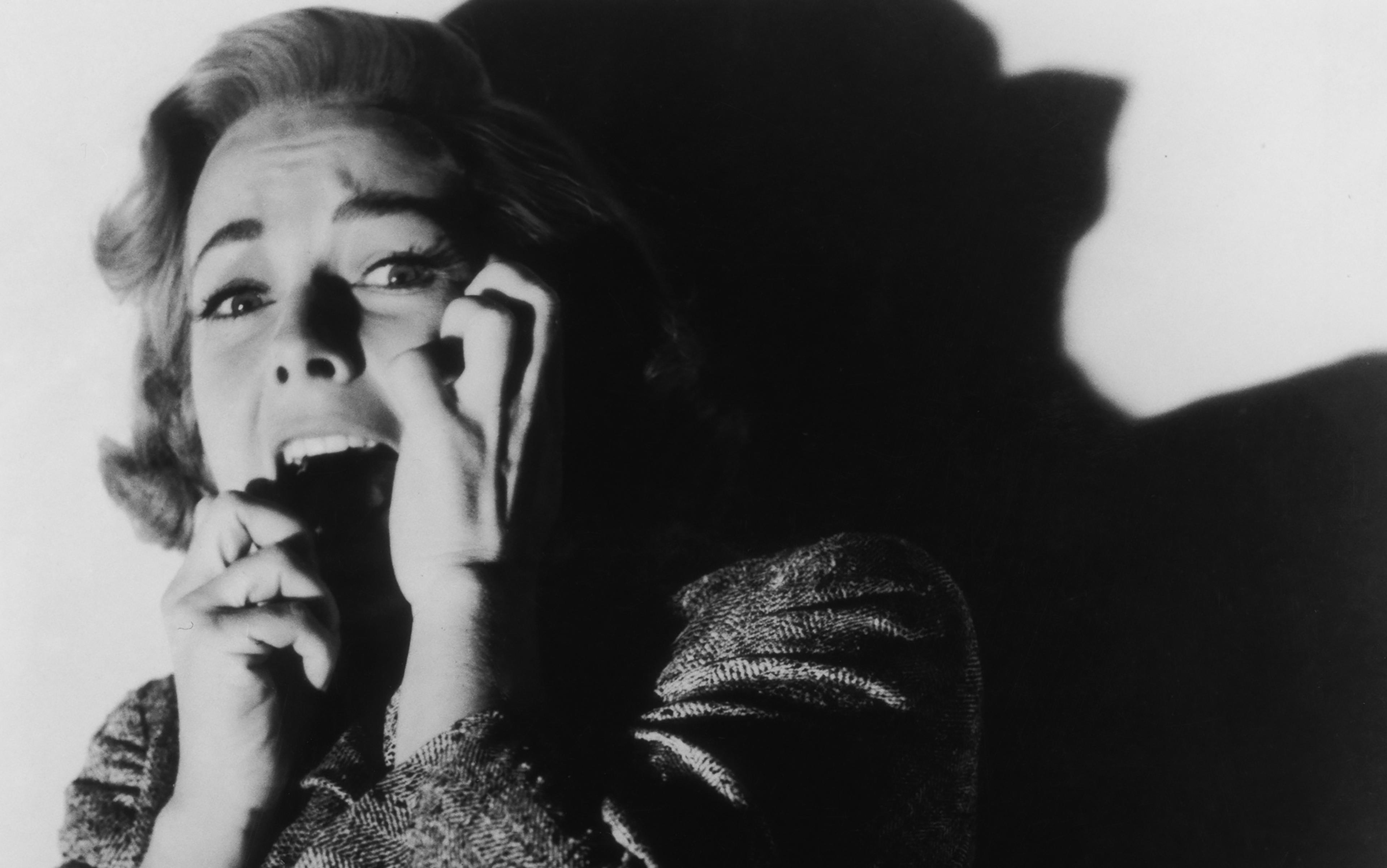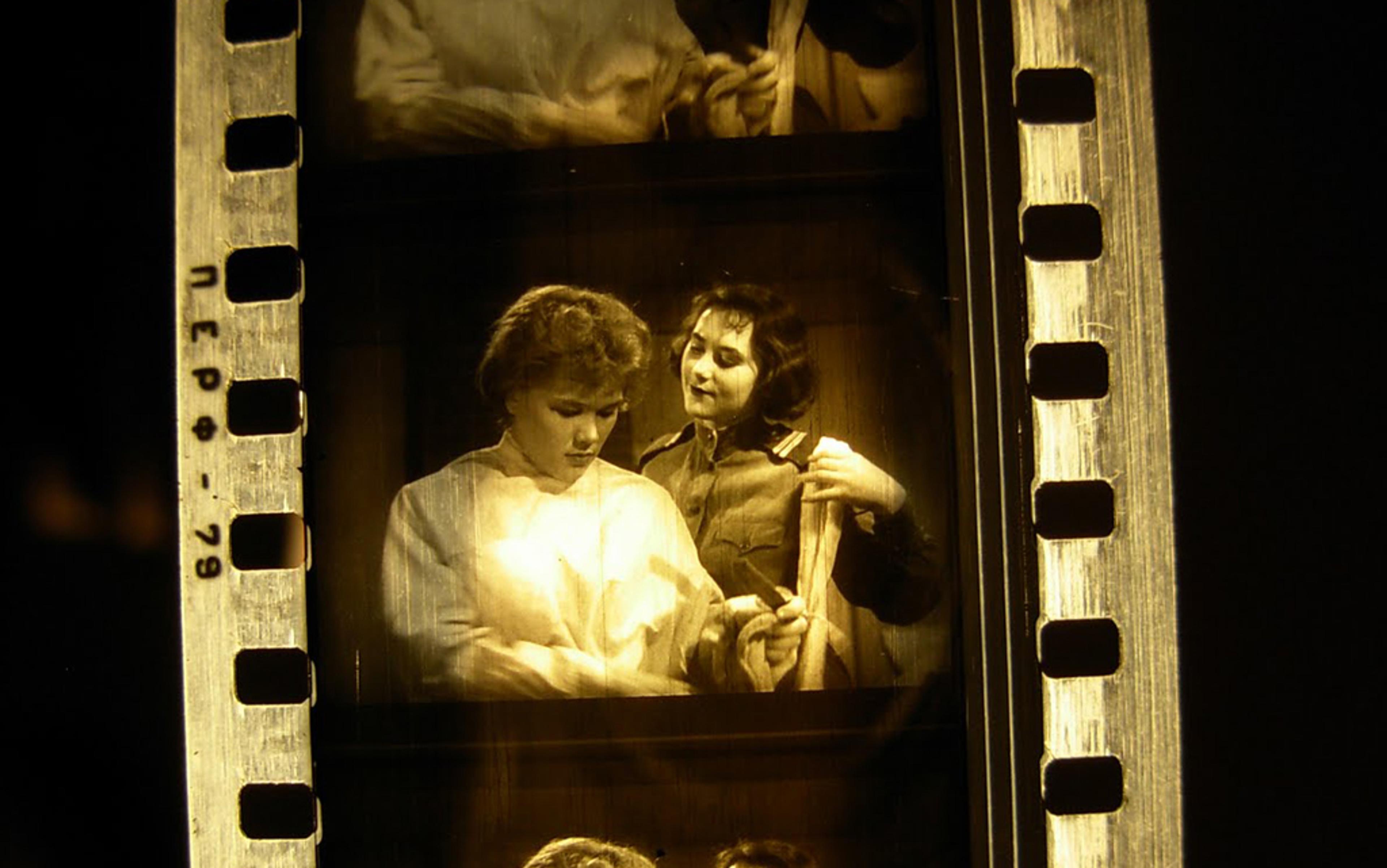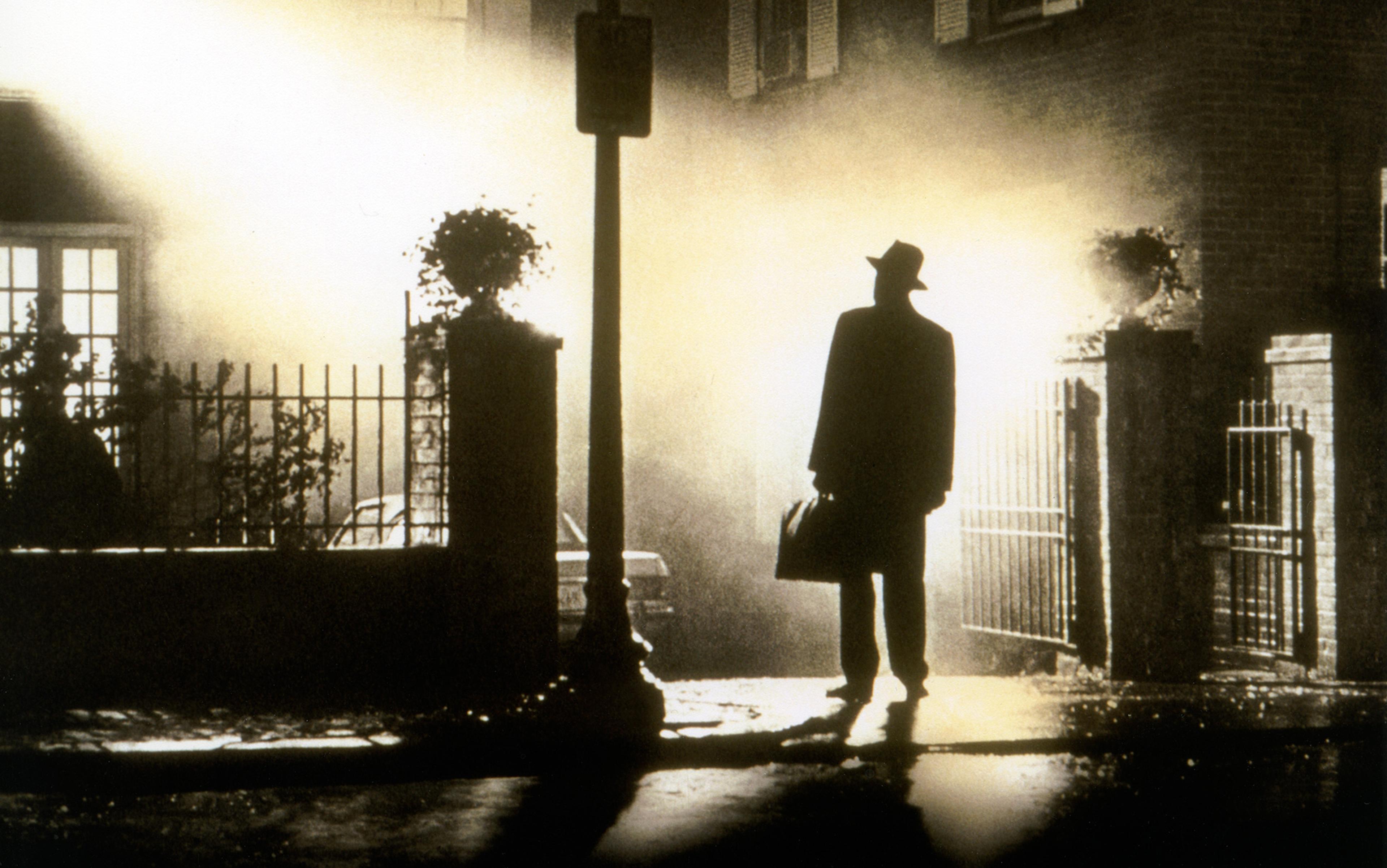Lynne Ramsay’s film We Need to Talk about Kevin (2011) is an exquisite study in fear. Based on Lionel Shriver’s novel of the same name, about a teen on a killing spree, it opens with the nightmare of his mother (Tilda Swinton) drowning in the red juices of a tomato-throwing festival; she wakes up to find her house and car covered in red paint. From the start, fear permeates every image of the film. As spectators, we too experience that fear: in the filtered red light of the present and the chilling white light of the past, in the anxious expressions of the mother and the detached cold gaze of the son. Only gradually do we learn the extent of Kevin’s transgressions. But the narrative is the mother’s journey. We have been inside her head all along, and suspense emerges when basic emotions like fear collide with a wide spectrum of higher-level reactions – guilt, hope, despair, and other more nuanced feelings that have passed through the filter of the thinking brain. This new brand of film, the neurothriller, creates a spiral of fear or lust, a warm bath of sorrow, not through classic narrative, but with sound, image, and sophisticated computer technology, all of it tapping the circuitry of the ancient emotional brain.
Perhaps the first person to manipulate film to reach the emotional centres of the brain was the master of suspense Alfred Hitchcock, who called cinema his laboratory and said each film was an experiment in the interplay between a cinematographic technique and the effect it had on the audience. Suspense and surprise, desire and longing, laughter and fear, sympathy and disgust were the emotions and feelings that Hitchcock managed to induce in his spectators. Hitchcock’s way of distributing narrative information and cinematographic effects guided his audience masterfully from one emotion to the next.
During the shooting of North by Northwest (1959), Hitchcock even confessed to his scriptwriter Ernest Lehman that he would love to access the spectator’s emotions directly. ‘The audience is like a giant organ that you and I are playing. At one moment we play this note, and get this reaction, and then we play that chord and they react. And someday we won’t even have to make a movie – there’ll be electrodes implanted in their brains, as we’ll just press different buttons and they’ll go “oooh” and “aaah” and we’ll frighten them, and make them laugh. Won’t that be wonderful?’ Hitchcock reportedly said, according to Donald Spoto’s biography The Dark Side of Genius (1999).
Today, Hitchcock’s fantasy of direct access to the brain is a reality in neurological operations such as deep-brain stimulation (DBS) for the treatment of patients with Parkinson’s disease. Experiments using the same technology aim to cure depression by stimulating more joyful emotional circuits. In turn, Hitchcock’s films are used by neuroscientists to study emotions in the brain. And while cinema itself has not literally transformed into a brain machine with electrodes hooked to our neuronal tissue, new models of cinema have nonetheless managed to plug more directly into the brain than the master himself. Consciously or unconsciously, contemporary filmmakers not only tap into increased knowledge about the brain offered by neuroscientific experiments, but their films also stimulate the neural senses of emotions without the detour of narrative.
In earlier days of cinema, the best method for stimulating the brain and eliciting a charged emotional response was plot itself. Hitchcock, for instance, contended that an audience with more knowledge than the characters on screen would be more engaged and emotionally implicated. ‘Let the audience play God,’ Hitchcock summarised his main rule for suspense.
This narrative rule is explained in Kent Jones’s documentary Hitchcock/Truffaut (2015), based on the legendary week-long interview between the two filmmakers, published as a book in 1967. Talking to his fellow director, Hitchcock gives the simple example of a scene where two people are having a conversation while sitting quietly at a table. Imagine we see them pleasantly chatting when suddenly a bomb explodes. The emotional effect on the spectator is that of surprise.
Now take the same dramatic situation of two people chatting at a table. But this time the audience has seen an additional close-up of a bomb hidden underneath the table, and a clock that is ticking away, indicating the moment of detonation. The characters know nothing and simply continue to enjoy their conversation. The audience, however, is now included in the narrative process because they will want to warn the characters to stop talking and get away before it is too late. Now we have an effect of suspense.
In all of Hitchcock’s films, the story provides the context for triggered emotions. Take Rear Window (1954), a film about film. The protagonist Jeff (James Stewart) is a photographer bound to his apartment because of a broken leg. He spends his days voyeuristically spying on his backyard neighbours. The ultimate spectator, he sits immobile (often in the dark) watching others act in front of his eyes. The different windows are like little cinema screens, each containing their own story. When a woman suddenly seems to have disappeared from her apartment, Jeff suspects a neighbour of killing his wife. Jeff’s girlfriend Lisa (Grace Kelly) sets out on an investigation and enters the apartment in question, setting off suspense when, like Jeff, we see the suspicious neighbour returning home. Like Jeff, we want to warn Lisa but cannot do anything: we bite our nails, cover our eyes, move to the tip of our seat, and fear for her life.
had it been the hero whose life was at stake, the audience would have been in an even greater state of distress
Other types of story elements create suspense as well: delaying progression of the narrative by crosscutting between scenes; emphasising details such as a glass of milk, a key or a lighter in the mise-en-scène (the setting on screen) so that they become suspicious story objects and gain dramatic value; adding mood music; or focusing on facial expressions that contradict the apparent meaning of, for instance, a romantic situation.
Moreover, characters who have the audience’s sympathy can count on more shared emotional anxiety when they find themselves in dangerous situations. In Hitchcock/Truffaut, Hitchcock recounts a suspense scene at the end of his spy thriller Saboteur (1942). The story is about a young man wrongfully accused of sabotage in a munitions factory. At the end of the film, the young man and the actual saboteur, all along portrayed as a real villain, have a confrontation on top of the Statue of Liberty. The villain stumbles and falls over the railing. Our hero just manages to grasp the sleeve of his enemy’s jacket and tries to pull him up. The action is slowed by crosscutting between long shots that emphasise the enormity of the Statue of Liberty and the mortal effects of a fall from such height, and close-ups of the sleeve that is slowly ripping apart. Even before the characters understand, the audience anticipates stitch by stitch the eventual downfall of the villain. While the situation is certainly suspenseful, Hitchcock felt he made a mistake in this scene: had it been the hero whose life was at stake, the audience would have been in an even greater state of distress.
In short, a Hitchcock movie can be considered a form of direct-brain stimulation. The neuroscientist Uri Hasson and his team at the Princeton Neuroscience Institute have demonstrated in an experiment that a Hitchcock movie effectively takes control of your brain. They showed Bang! You’re Dead (1961), a short film that Hitchcock directed for his television show Hitchcock Presents to a group of test subjects. In the film, a little boy finds his uncle’s gun and thinks it’s a toy with six toy bullets. Unaware of the dangerous reality, the boy places the bullets in the gun and starts playing, pointing the weapon at several (equally unwitting) people around him: his friend, his mother, his uncle, and the maid. We never know if or when he will pull the trigger. The test subjects, meanwhile, were connected to galvanic skin-response devices and put in an fMRI scanner while watching this film. They responded in practically identical ways, showing that tension levels go up at each step as the director guides us through the story.
Hitchcock knows how to manipulate our emotions, and narrative is key. The dramatic situations lead to an understanding of, and engagement with, the emotions of the characters on screen. Obviously, classical methods of suspense are still very effective on the screen today.
But in the digital age, with new findings in neuroscience and new cinematographic technologies evolving in lockstep, the game has changed. Cinema’s awareness of neuroscience is perhaps best illustrated in Pixar’s Inside Out (2015). This animated film explores the emotional life of Riley, an 11-year-old girl who moves to a new city, told from the perspective of the basic emotions inside her head. The film playfully visualises the adventures of Joy, Sadness, Fear, Anger and Disgust; these are not just Riley’s emotions but also characters in the film, and help the filmmakers give us a guided tour of the brain. In the beginning, Joy is the dominant emotion in Riley’s life, but the change of scenery creates much more work for Sadness, Fear, Anger and Disgust. Joy has to learn that the other emotions have their role to play in a well-balanced life, and we witness the formation of a more integrated system, where ‘emotions have feelings’. Joy finds out she can be sad, and that disgust and anger can be useful.
While Inside Out is a children’s film and each emotion is represented as a character, it quite intelligently deals with neuroscientific knowledge about the architecture of the brain, the workings of memory and the neuropsychological insight that there is a difference between emotions (usually considered impersonal, universal, instinctive survival mechanisms) and feelings (more complex, personalised emotions, connected to memories, social norms and cognitive abilities, for example shame, jealousy, guilt, compassion and other more integrated reactions to life).
This understanding of the emotional brain has been translated to a far more nuanced, potent type of cinematic art. Today, filmmakers channel the findings of neuroscientists such as Jaak Panksepp of Washington State University, who discovered the seven fundamental emotions – in the Panksepp nomenclature: SEEKING, RAGE, FEAR, LUST, CARE, PANIC/GRIEF, and PLAY, all capped because they run through the gamut of mammalian species from rats to humans. Most famously, Panksepp demonstrated that rats enjoy the social interaction of being tickled by a human hand. Panksepp’s experiments with crying dogs demonstrated that FEAR has different forms, be it FEAR of attack or PANIC over separation from mother – the worst sort of GRIEF.
Filmmakers have also tapped into the concepts of the neuroscientist Antonio Damasio of the University of Southern California, who has shown how deeply embodied emotions are – how the ‘gut feeling’ works on the level of the brain. In one paper, Damasio discusses a patient treated for Parkinson’s through deep-brain stimulation; as the electrode moves through her brain from moment to moment, a sad expression sweeps over her face, then she starts to sob, and finally she feels suicidal. The treating physician immediately aborts the process of brain stimulation; the sobbing stops, the facial expression vanishes, and the patient returns to normal. Pure feeling, without narrative, is a human trait as well.
Cinema is now part of a larger digitalised surveillance culture, mediated by screens that turn every city street into a backyard we can spy on
That’s the insight that drove the director Lars von Trier, whose own dark experience of depression is made manifest in Antichrist (2009) and Melancholia (2011). Von Trier asks his spectators to forget the outside world of the story, and to ‘look inward’. Melancholia is the name of a planet that is about to hit Earth, extinguishing all life on it. The film’s main characters express basic emotions in relation to this imminent event: Justine (Kirsten Dunst) and her sister Claire (Charlotte Gainsbourg) react to this danger of the Apocalypse with, respectively, depressive sadness (to the point of complete apathy, in Justine’s case) and fear (for losing everything, in Claire’s case).
But Damasio’s neuroscientific insight helps us understand that Melancholia immerses us in emotion directly, on an embodied level, before any rational understanding takes place. The primal access we have as spectators is at the level of pure sadness, something we can feel in the dark colours of the setting, in the slow motion of some scenes, which seem to have lost all energy, and in the heavy movement of Justine, who barely manages to walk. Before any story event explains anything, we feel the emotions and the fight between sadness and fear as if we are inside von Trier’s head. Melancholia could therefore be considered as the expression of pure affect – pure emotion.
Sophisticated filmmakers have marshalled the recent findings of neuroscience in spectacular ways. In the hands of the most skilled directors, the affective dimension in contemporary cinema has gained independence from the story itself. Without staging emotions literally, as happens in Inside Out, films increasingly evoke a subjective world, often coloured by an immediate affective dimension that is primary to and stronger than the narrative context. In contrast with a Hitchcock film – where the spectators know the story, can anticipate the next steps and feel for the characters – in contemporary thrillers, the spectator knows just as little as the characters, and is immediately drawn into the subjective emotional word of the protagonists. As spectators, we indeed experience the world increasingly ‘inside out’ and have direct access to the drama of the neural mechanisms of emotion. We are taken on a neuronal rollercoaster that will eventually give us the story. Hence it might be possible to speak of contemporary suspense cinema as a cinema of ‘neurothrillers’.
The neurothriller has ‘embodied’ the emotion of the film, just as the human body embodies the emotion of the mind
The ultimate example of a contemporary neurothriller is Andrea Arnold’s Red Road (2006). In its voyeuristic set-up, it is very similar to Rear Window: a CCTV operator Jackie (Kate Dickie) keeps an eye on the city of Glasgow from behind her multiple-screened video wall, like a Peeping Tom who looks at others from a distant, safe place, representing the position of the spectator. Because of its explicit reference to surveillance culture, Red Road, like Rear Window, is a film about film. Cinema is now part of a larger digitalised surveillance culture, mediated by many screens that have turned every home and every city street into a backyard we can spy on. In both Rear Window and Red Road, the observation routines of the main characters are interrupted, and here the differences between the classic and contemporary thriller become more pronounced.
In Rear Window, Jeff suspects a murder mystery and starts to investigate, remaining at a distance, only to become more engaged when he sees his beloved endangered on the opposite side of his window. In Red Road, Jackie’s closed-circuit TV routine comes to a standstill early on when on one of her monitors she sees a man whom she seems to recognise, and who in any case engulfs her with emotions. Her eyes dilate; her body freezes. She zooms in on his face, trying to see more clearly.
Overwhelmed, she leaves her workstation and, from this moment on, Red Road takes us on a ride through Jackie’s emotional brain. When she first sees the man on her screen, we as spectators feel the tension in her body quite viscerally, sensing at once fear, disgust, anger, and possibly lust. This intense ambiguity is expressed in the grains and pixels of the images without yet making narrative sense, and then slowly but surely qualified and transformed into more conscious feelings of revenge, guilt, forgiveness, and redemption. The film is so powerful because it plays out on multiple levels, moving us between emotions and feelings, with narrative filling in only in the final analysis, when the feeling has already been long established and clearly wrought.
But the difference between the classic thriller and the neurothriller is not simply the difference between a narrative-driven plot and a character-driven plot. It is not necessary, and often not possible, to identify or engage with the character at the beginning of a neurothriller at all. In contemporary cinema, we are often denied an establishing shot or introductory scenes situating the character in a narrative context. Thrown in the middle of a confusing situation, we first connect on the immediate primal level, expressed through cinematography’s aesthetic stand-in for the emotional mind: close-ups, grainy images, colours, sounds can all have direct impact without being connected to either a story or a person. The neurothriller has ‘embodied’ the emotion of the film, just as the human body embodies the emotion of the mind.
A final difference between the classic thriller and the newer neurothriller concerns the perspective between the camera and the screen. In Rear Window, Jeff stands for the classic spectator, and most of the time remains in the safe position of the voyeur who watches from a distance. He oversees the situation, knows when there is danger, and is frustrated (like the film’s audience) that he cannot warn his girlfriend when she is in danger on the other side of his viewfinder. It is only at the very end of the film, when the neighbour looks out of his rear window and spots his observer, that Jeff’s voyeuristic position is challenged. But this also wraps up the narrative because the killer is caught.
In Red Road, on the other hand, Jackie leaves the safety of her multiscreen workstation and enters the other side of the cameras. Changing positions between observing and being observed, she investigates the complex and confusing emotions and feelings of surveillance culture, and arguably of contemporary media culture more generally. Jackie is not just a Peeping Tom. As a new aesthetic figure, she explores the complex, emotional relationship we have to our cameras and screens.
The contemporary neurothriller brings us more directly in touch with the emotional processes in our brains that connect us to the world and to other people. It is as if, with characters such as Jackie, we fall through the rabbit hole of a neuronal wonderland, while ‘Sensing Alices’ guide us through dynamic and confusing adventures of the emotions and feelings on the screen.






